

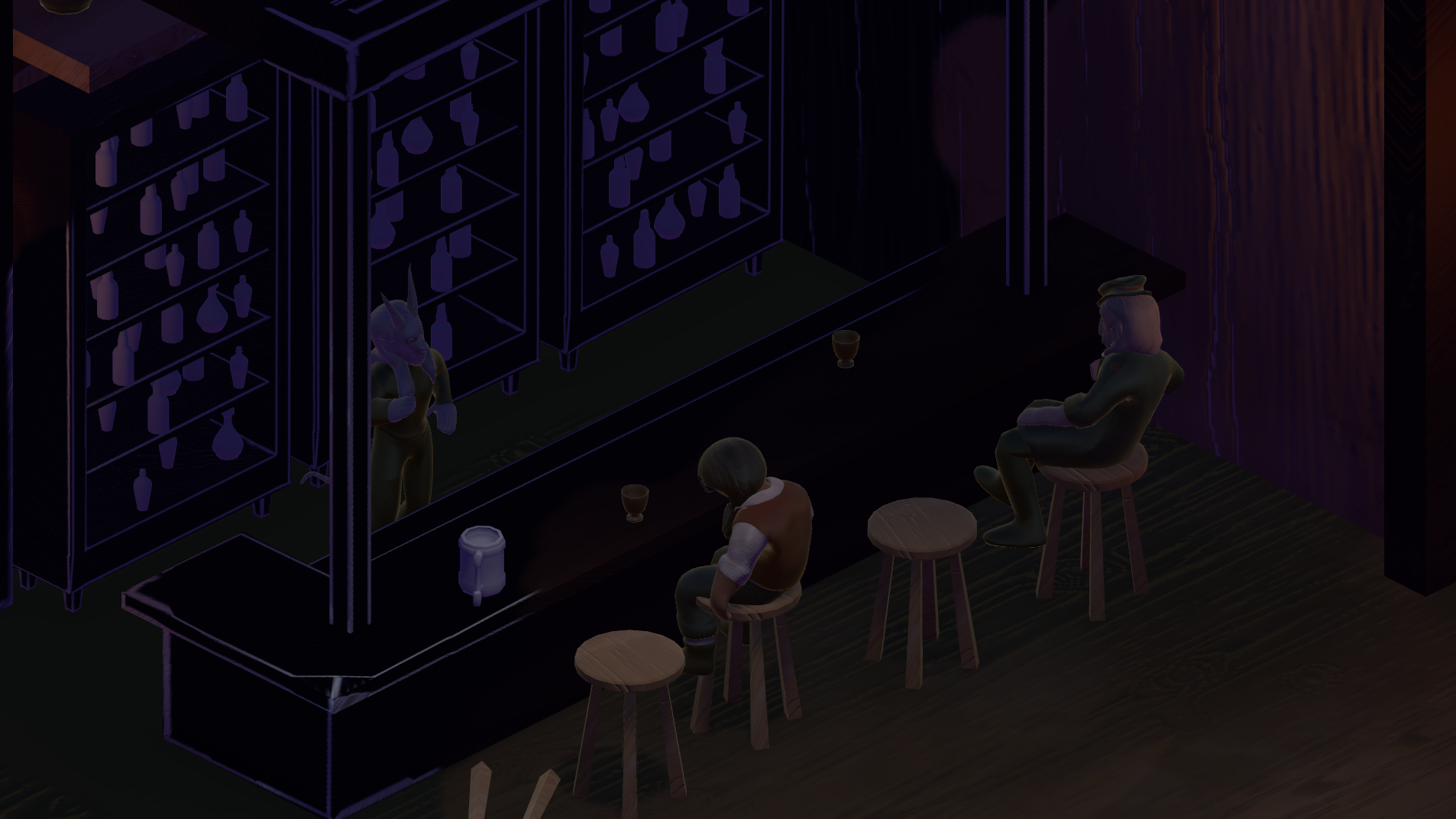
Rathskeller is a tavern brawler game developed as a 5-week project during my junior year in the Pratt Game Arts BFA program. It was developed on a 3-person team, in collaboration with Sebin Kim and Tea Maxwell. The game takes the player through the story of an unlucky tavern hopper who tries to run away from his problems by getting into barfights.
I was the lead artist on the project, curated the visual feel of the game through diverse environments and characters. I was responsible for all of the 3D models in the game, as well as lighting and technical art.
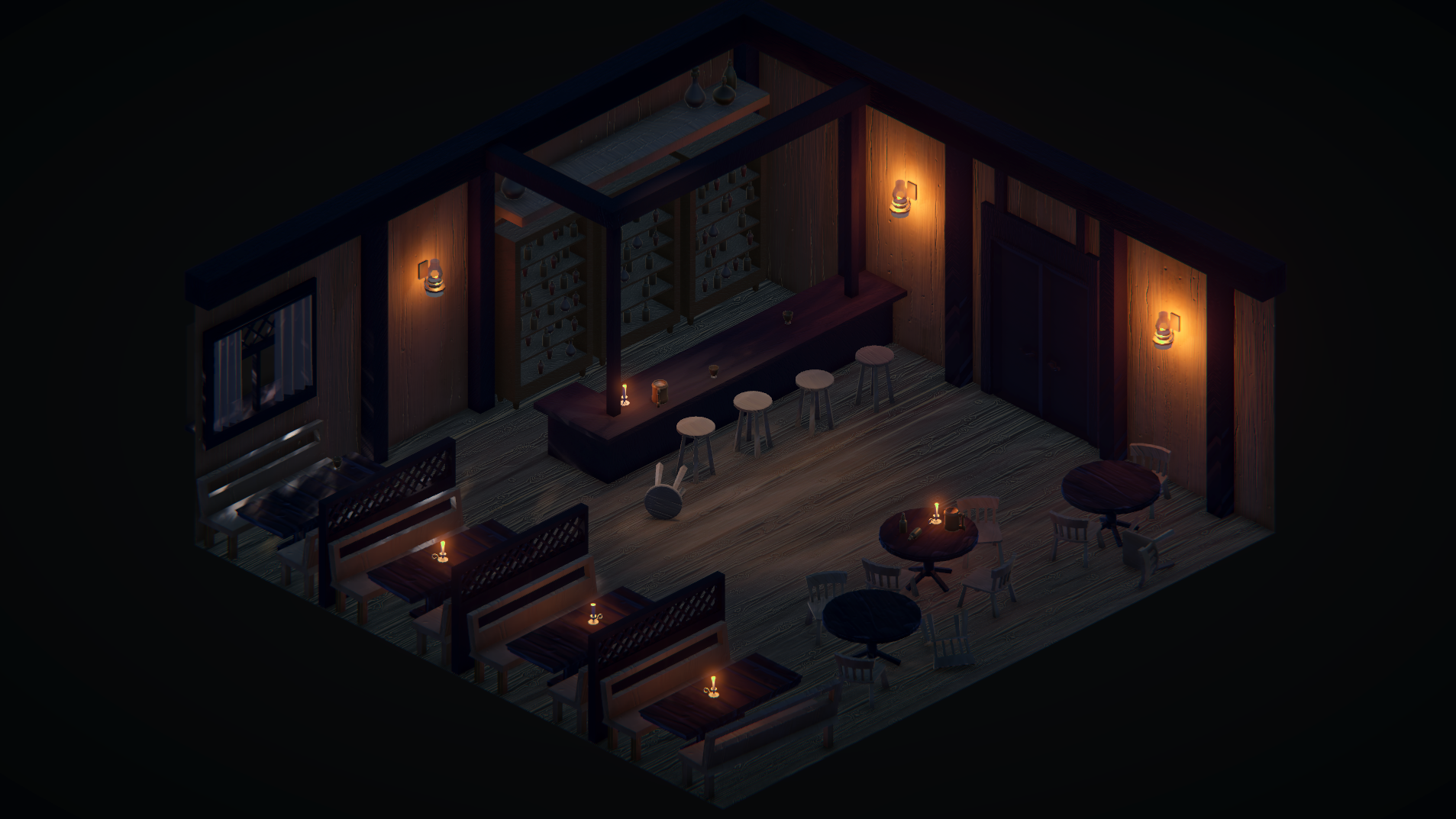
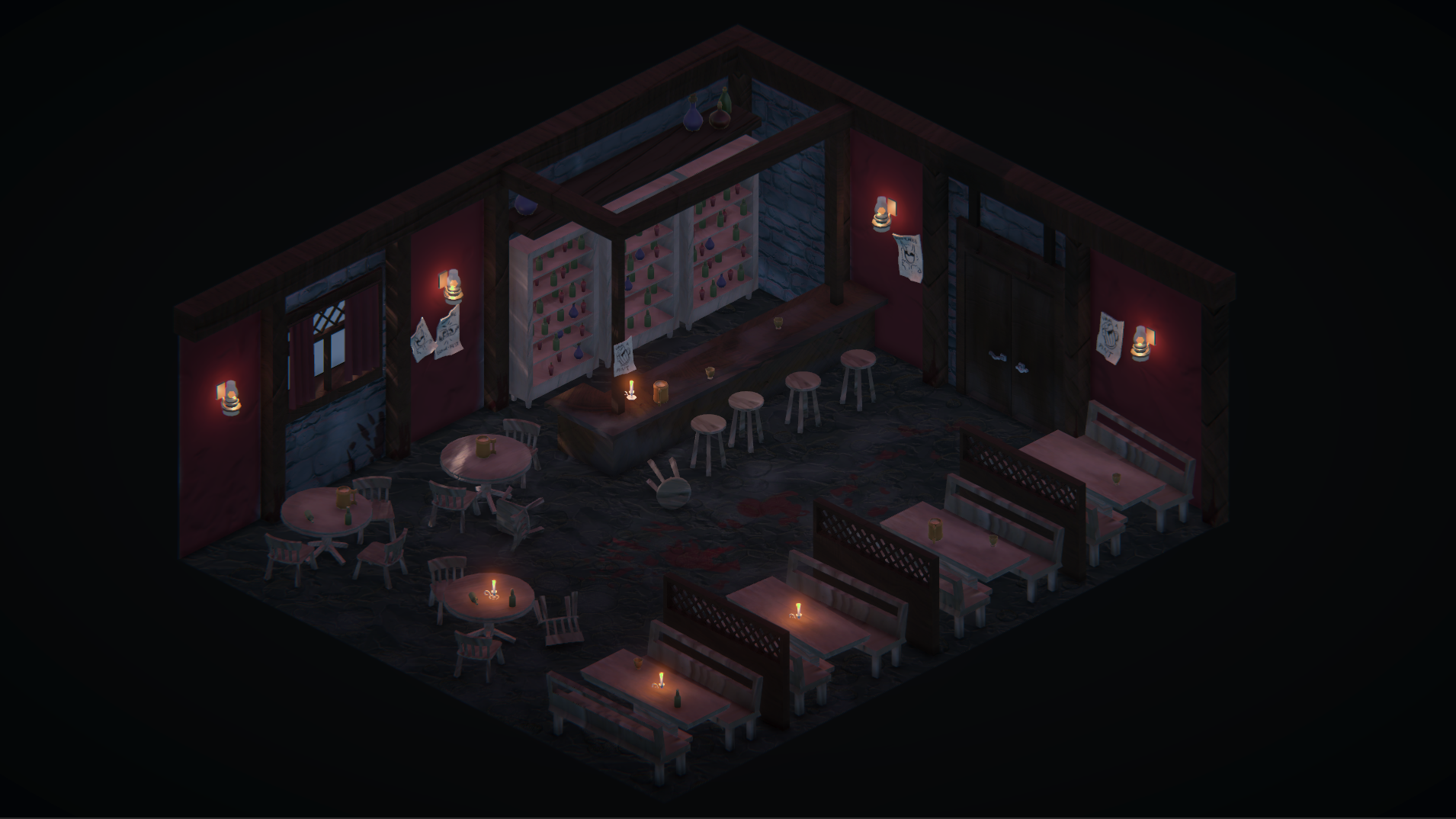
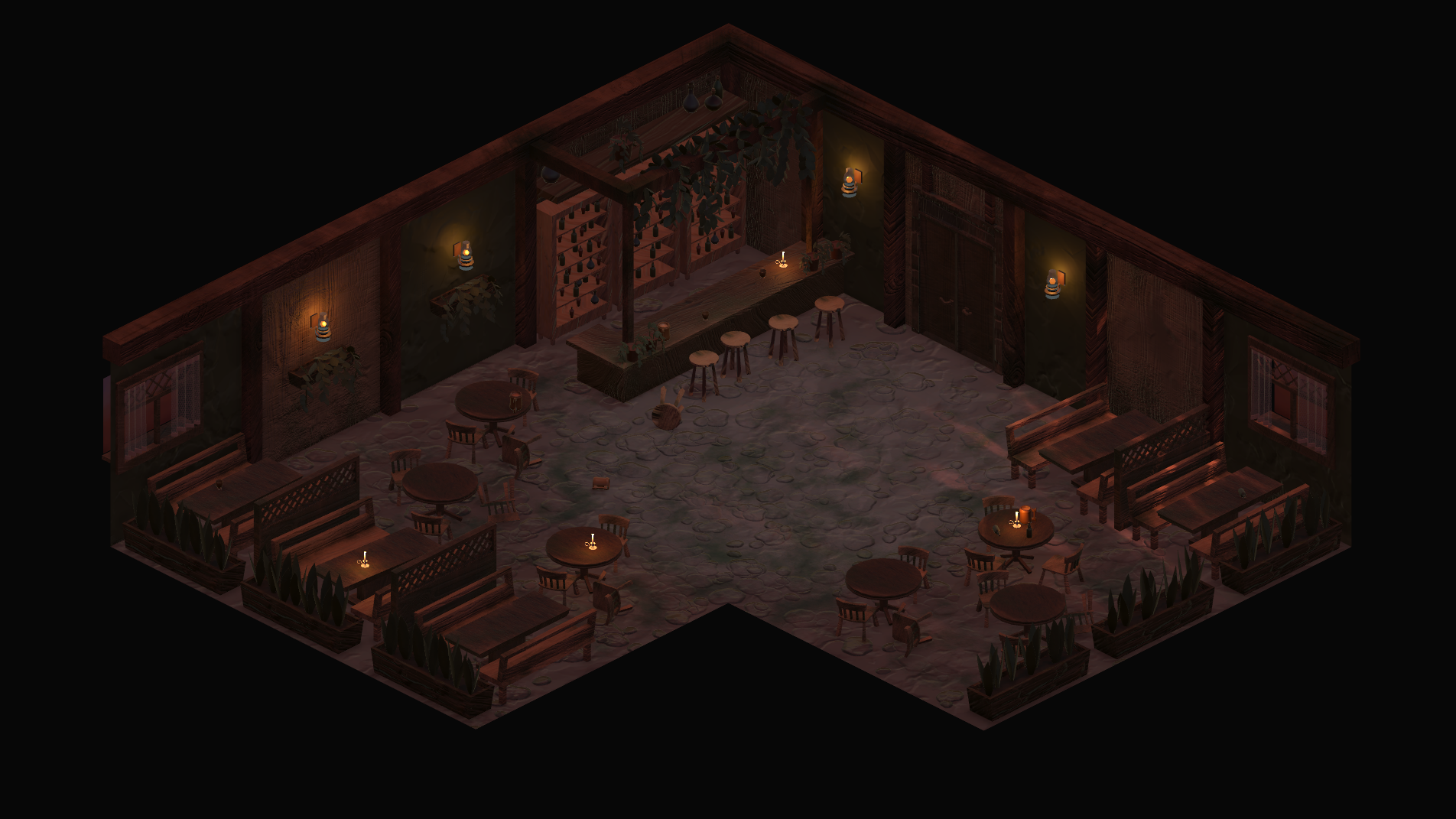
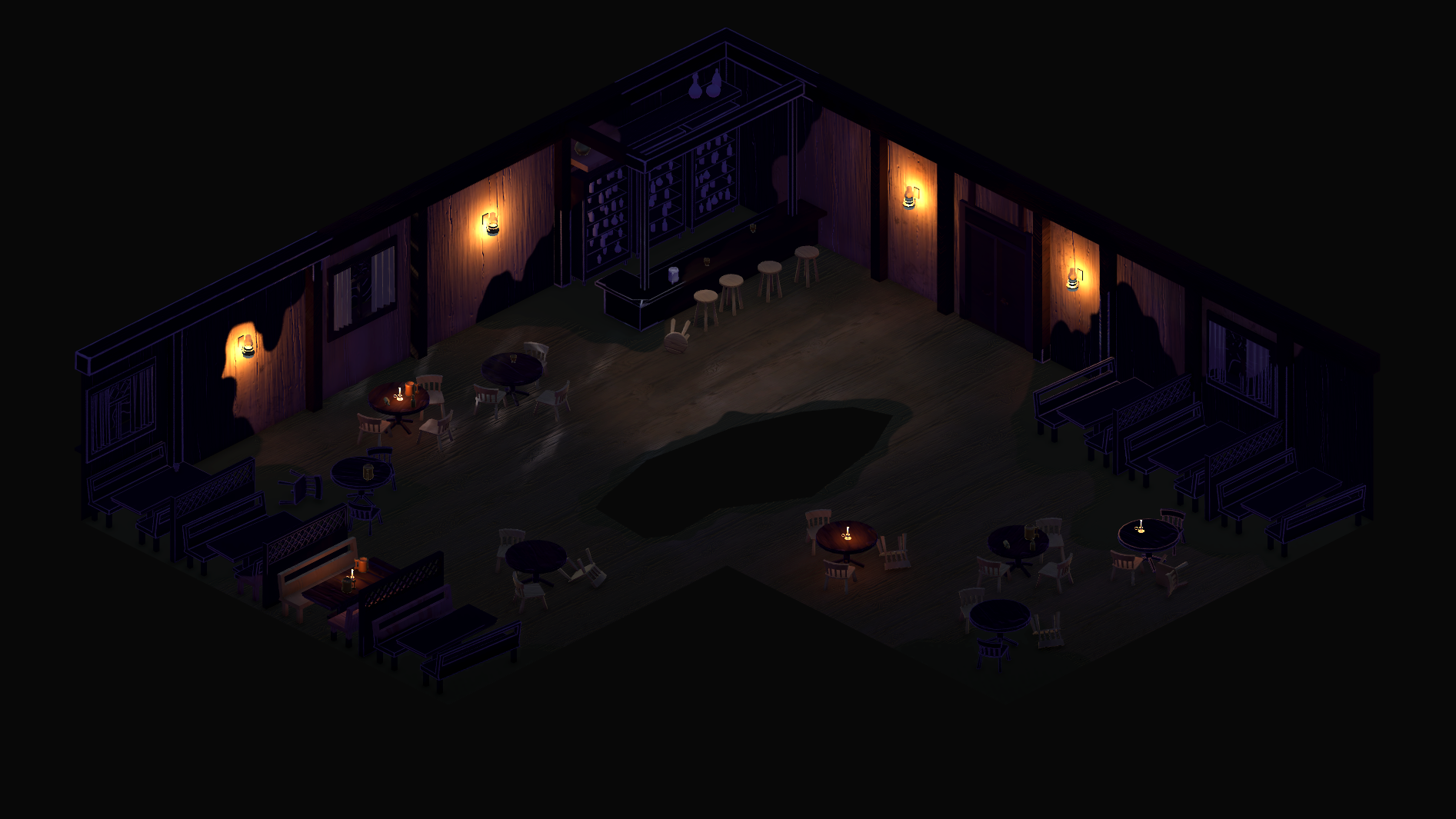
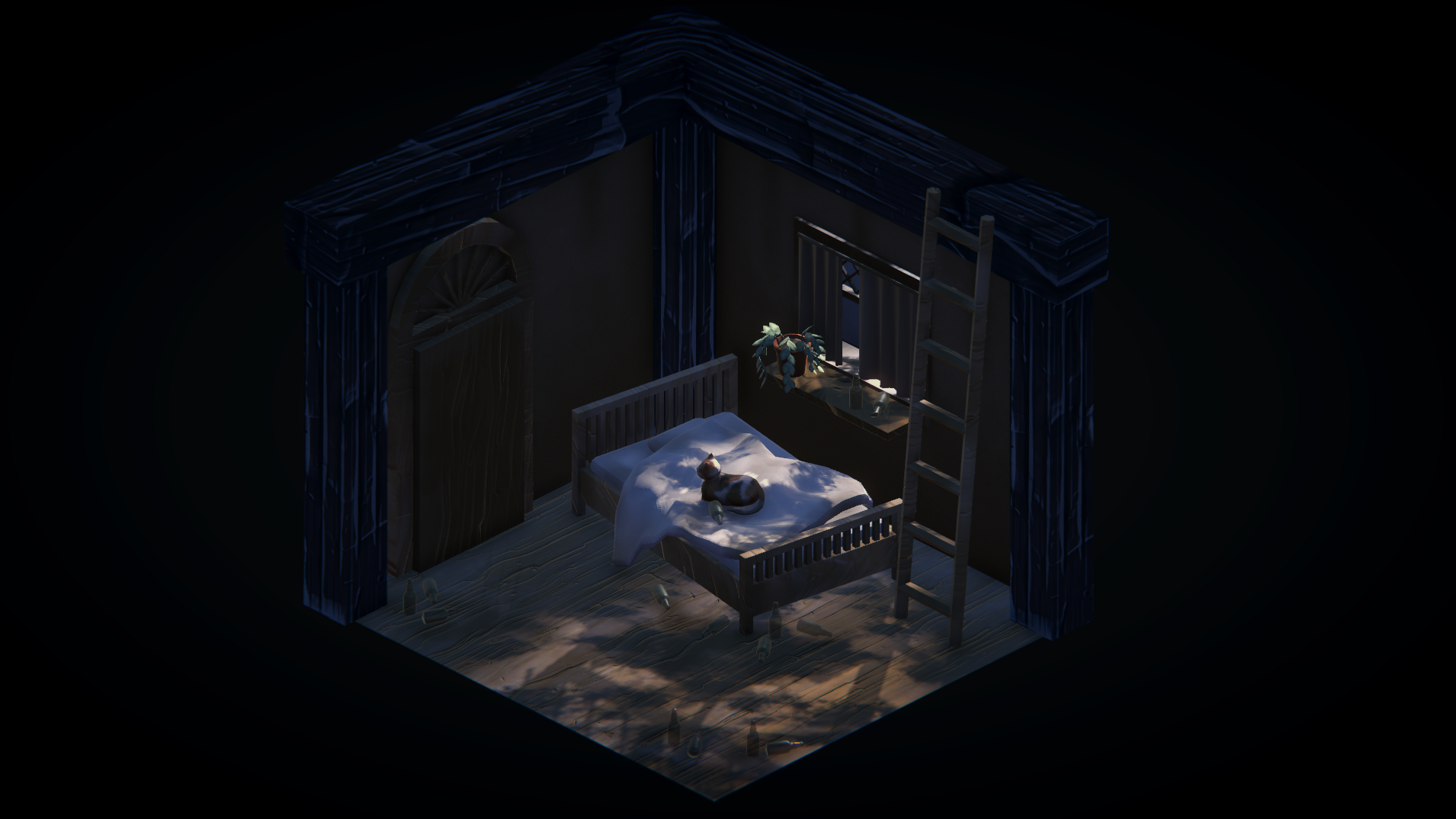
The game has four primary environments, all of them being a different tavern that the character stumbles into on his journey. Their visual style is directly connected to the bar owners challenging the main character to a fight, as well as a stage of grief represented by that point in the story.
The first tavern is a regular bar with dim lighting and wooden details. It represents denial - the character's lack of acknowledgement that he has a problem that needs a solution deeper than being at the bottom of the bottle. The space is small, which makes for a simpler fight, as neither of the characters can do much beyond landing direct hits. It's the most down-to-earth environment.
The second tavern has a slightly more crude feel to it, representing anger. Here, some more brutal enemy attacks are uncoveered, and the characters get more room to move around. The tavern also has multiple posters advertizing a fighting ring where the owner is a champion. The colo scheme of the tavern is centered around the color red, to add to the aggressive feel of the space.
The taverns get interrupted by a visual-novel-style cutscene representing bargaining, where the protagonist has an argument with the primary antagonist - the old man. The environment for the conversation is a slightly run-down building passed on the way to the next bar. The bargaining is represented by the change to an outside space - the main character is convinced that he can change, and he is going between bars out of his own free will.
The fourth environment is a tavern overrun by plants, representing depression. Although pretty and welcoming at a first glance, the tavern has been left unattended by its owner for a while. The taveren is unassuming, but it still contributes to the overall issue that the main character struggles with.
The last tavern is the largest and most surreal one, with the line between reality and addiction-fueled stupor merge. Here the main character confronts the primary antagonist in a final fight. The design of the tavern is meant to show that the character's mental health is deteriorating and he needs to take action, or his reality will fall apart. That concept is further reinforced from a level design perspective, with the hole in the middle of the level that the character can fall into, showing the struggle with keeping himself afloat.
The last environment seen in the game is the main character's house, in slight disarray. The space is more or less cluttered depending on the game's outcome - if the main character managed to break the cycle of his addiction, the house is brighter and more welcoming than if he gives into his aggression.
Since it was a short project, making the environment creation process streamlined was my top priority. Many of the pieces are reused between environments with different textures, and the environment layouts are modular to further aid me in the process. This project was a major step for my understanding of the importance of textures and reusable assets.
The main challenge of creating the project's environment was keeping them interesting while reusing the same scene in the narrative, with the entirety of the story happening on the castle grounds. I achieved that through changes in lighting between the story's timestamps. Each beat has its own color light overlay, with the colors getting colder and darker toward the end of the game.
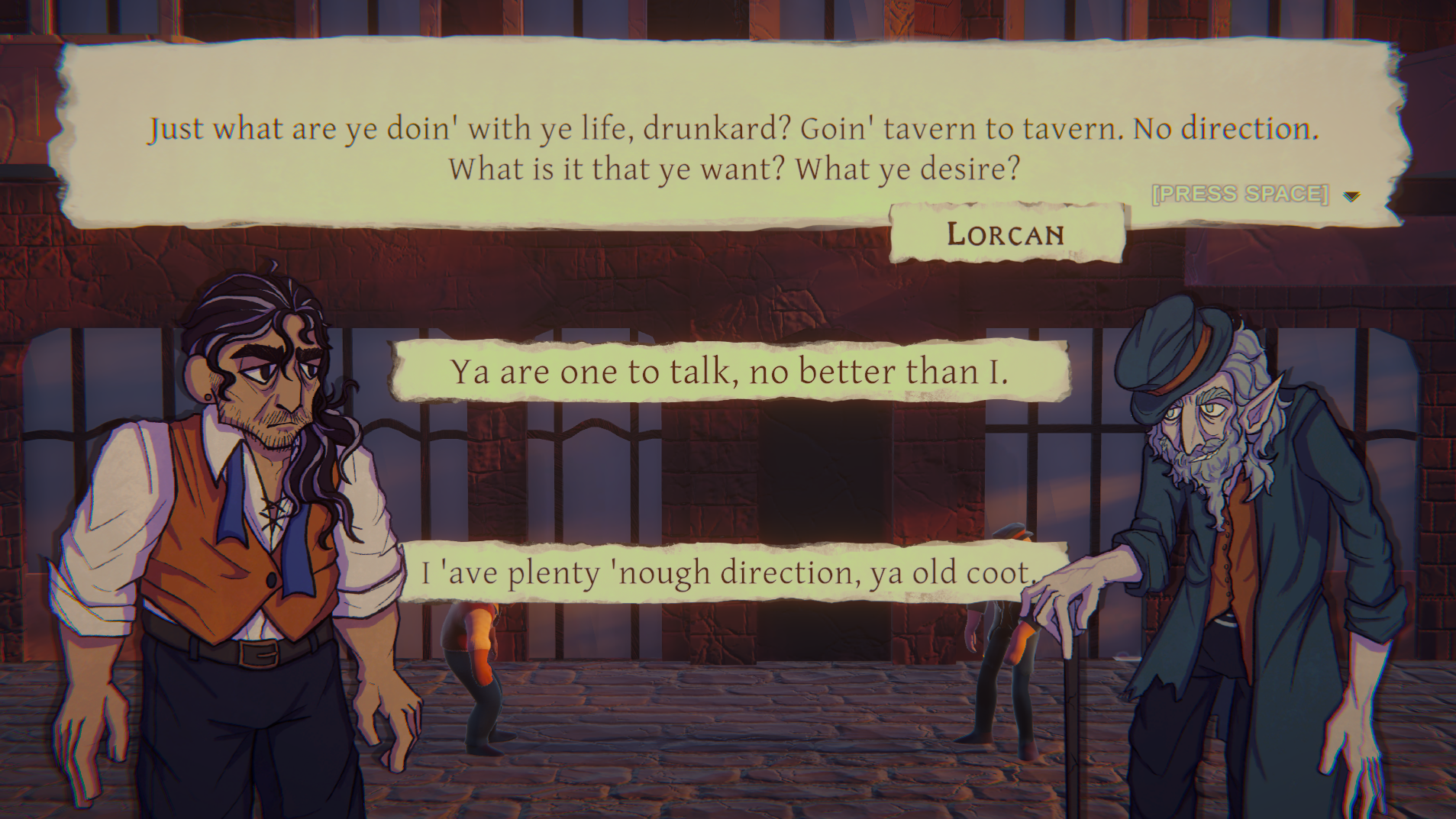
The majority of Rathskeller's story is told through dialogue, which is why the dialgoue UI had to be easy to understand. Pulling from traditional visual novel UI, I made a dialogue system design that would allow for both clear readability and accessible player choices kept in the style of the game. Stylistically, the UI reminisces pieces of old burnt paper, which play into the themes of the main character's deteriorating mental state and weakening grasp on reality.
A major part of the UI are also the character portraits, which I drew in a book illustration style to tie together with the paper-based UI elements. Each character has multiple expressions that show thoughout the dialogue with the use of the Ink tagging system.
It was important for the UI to be uniform and to fit text of different sizes, especially with the inclusion of the dialogue system that changed the readibility of dialogue based on character inebriation, which I designed together with Sebin Kim.